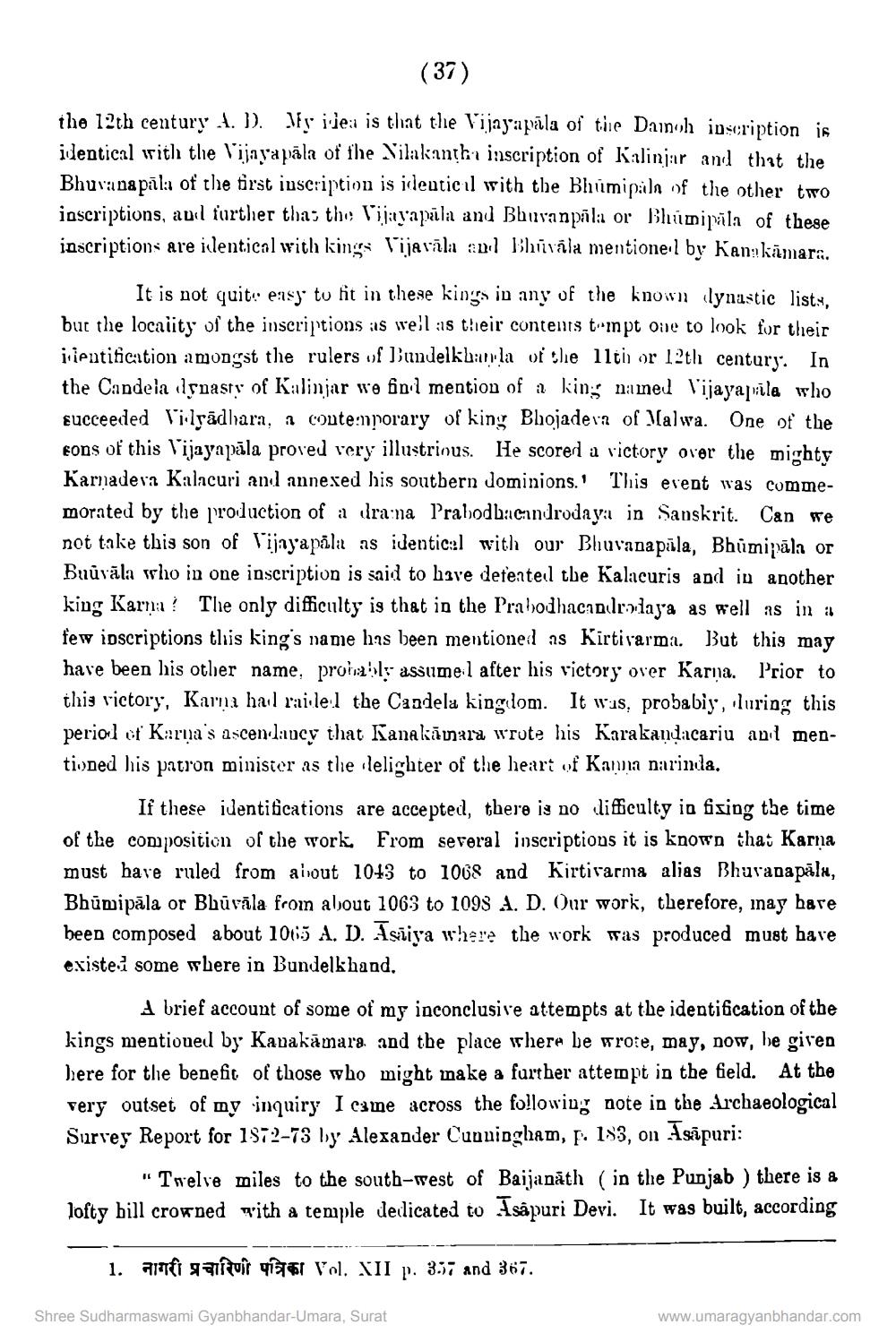________________
(37)
the 12th century. 4.)). My ite: is that the Vijayapāla of the Dainoh inscription is identical with the Vijayapāla of the Nilakantha inscription of Kalinj:ır and that the Bhuvanapāla of the first inscription is identical with the Bhumipiin of the other two inscriptions, aul further tha: the Vijayapāla and Bhuvanpāla or Bhumipäla of these inscriptions are identical with kings Vijavāla sul Bhuvāla mentionel by Kankūmara.
It is not quit: etsy' to fit in these kings in any of the known (lynastic listy, but the locality of the inscriptions as well :15 their contents tmpt one to look for their jientification amongst the rulers of Bundelkhula of the llti or 12th century: In the Candela snasty of Kulinjar we finil mention of a king nuned lijayaprīla who succeeded Viilrādlara, a contenporary of king Bhojadeva of Malwa. One of the eons of this Vijayapāla proved very illustrious. He scored a victory over the mighty Karnadeva Kalacuri anul annexed his soutbern dominions. This event was commemorated by the production of a dra:na Prabodbacindroday in Sanskrit. Can Fe not take this son of Vijayapāla as identical with our Bhuvanapāla, Bhumipāla or Buůvāla who in one inscription is said to have detented the Kalacuris and in another king Karna! The only difficulty is that in the Prabodhacandrolaya as well as in a few inscriptions this king's name has been mentioned as Kirtivarma. But this may have been his other name, pronal assume l after his victory over Karna. Prior to this victory, Kamma hail raide:l the Candela kingilom. It was, probabiy, oluring this period of Karna's ascendancy that Kanakānara wrote his Karakandacariu apil mentioned his patron minister as the lelighter of the heart of Kanna narinda.
If these identifications are accepted, there is no difficulty in fising the time of the composition of the work. From several inscriptions it is known thai Karna must have ruled from alvout 1043 to 1068 and Kirtirarma alias Bhuvanapālu, Bhūmipāla or Bbūvāla from about 1063 to 1098 A. D. Our work, therefore, inay bare been composed about 1065 A. D. Isīiya where the work as produced must have existed some where in Bundelkhand,
A brief account of some of my inconclusive attempts at the identification of the kings mentioned by Kavakāmara and the place where be wrote, may, now, be given here for the benefit of those who might make a further attempt in the field. At the very outset of my inquiry I came across the following note in the Archaeological Survey Report for 1972-73 by Alexander Cuquingham, f. 193, on Asāpuri:
"Twelve miles to the south-west of Baijanāth (in the Punjab ) there is & lofty bill crowned with a temple dedicated to Isapuri Devi. It was built, according
1. Alfi gatituir qafar Vol. XII p. 3.77 and 367.
Shree Sudharmaswami Gyanbhandar-Umara, Surat
www.umaragyanbhandar.com




